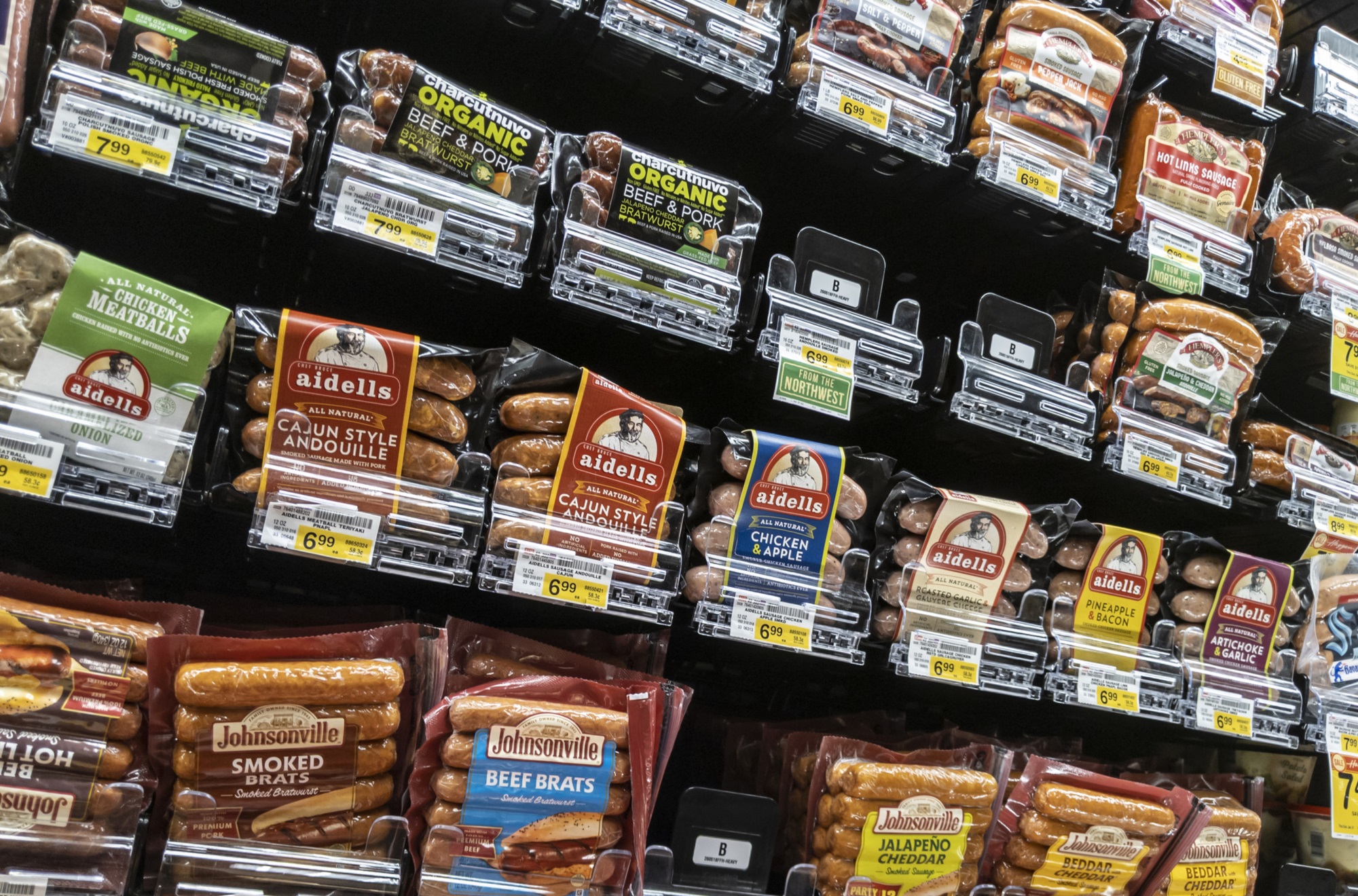

Americans consume billions of pounds of meat each year. And yet, there’s a plethora of research showing that copious amounts of meat can be unhealthy, both for the Earth and our bodies.
The question of how to steer consumers toward healthier and more sustainable plant-based foods is a tricky one. Warning labels, similar to the ones found on cigarette packs, could be one way to raise awareness about the negative impacts of meat and perhaps sway consumer choices. But they’re still completely experimental.
In a new study published in the journal Appetite, psychologists in the UK created an online food-selection task where about 1,000 participants—all of whom ate meat—had to choose between a meat-based, fish-based, vegetarian, or vegan meal 20 times. A quarter of these participants based their decisions on images of each of the dishes. The remaining participants were randomly assigned to also see a warning label about the impact of meat on health, climate change, or the risk of future pandemics (researchers and organizations like the United Nations have linked high meat consumption with risk of infectious diseases). The team found that each warning label type reduced the subjects’ desire to eat meat: by 9 percent with health labels, 7 percent with climate labels, and 10 percent with pandemic labels. The individuals also viewed the climate label as the most credible of the three and the pandemic label the least, but potentially had a stronger emotional response to the latter.
One reason these warnings might work is because people see a negative outcome attached to meat, so they have a gut reaction and opt for a different food, says Jack Hughes, a psychology researcher at Durham University in England and lead author on the new paper. Another explanation could just be that the extra information gets people to think more consciously about their decisions, he explains.
[Related: How to enjoy fake meat in a way that actually helps the planet]
The results of the study are “very in line with what we’ve seen with regards to labeling efforts and their effect on consumer behavior,” says Lindsey Smith Taillie. “They have a small to moderate effect on consumer choices.” Taillie, a nutrition epidemiologist at the University of North Carolina who studies how policies affect food choices, notes that the inclusion of pandemic-related labels is a first for this kind of research, at least to her knowledge. She would be especially interested to see how consumers in the US would react to that kind of messaging given the different political and cultural climate.
There are many factors that could influence the effectiveness of a warning label on a product. For example, as basic as it sounds, pictures make a difference. “We do know for tobacco in the UK that when images became mandatory alongside the text, labels got more effective,” Hughes explains. In two prior studies, Taillie and her collaborators found that text-only labels cautioning of health and environmental impacts of meat consumption only mildly reduced people’s carnivorous intentions, if at all.
But not all images are the same. Take the case of high sugar content: A photo of teaspoons full of sugar is more factual and informative than a visual of a diseased heart, Taillie says. Regardless, “graphic labels are generally considered to be the most effective type,” she adds.

With warning labels, the goal is to grab people’s attention and get them thinking about their food’s footprint. But it ends up being counterproductive if the message makes the consumer feel angry or restricted, Taillie adds. One 2022 study out of Europe found that eliciting disgust by adding graphic images to packaging can both increase and decrease the likelihood of individuals choosing meat products, depending on whether they felt manipulated. Another recent European study found that meat-shaming messages on products can have paradoxical effects on buying habits.
The next step for this sort of research, says Taillie, would be to see how such labels affect choices in real-world settings—when factors like smells, prices, and peer pressure might influence consumer decisions. It’s also probably easier to choose the plant-based option when it’s a hypothetical online task and you don’t actually have to eat the food, she adds.
[Related: When faced with tough choices, your brain secretly tips the scales]
But choosing a meat-free diet can be an incredibly impactful way for individuals to reduce their carbon footprint, and this research can help nudge people in that direction. “In the UK, the Climate Change Committee says that meat consumption in the country needs to be reduced by 20 percent by 2030 [to meet carbon emission goals],” Hughes says. His team’s work shows that one simple and cheap action could change minds in a portion of the population.
Would that be in the case in the US as well? Taillie sees a parallel with graphic tobacco warnings, which were adopted by European countries but have stalled in the state due to lawsuits. With meat labels, she says, “I think we’re looking at a timespan of decades.”